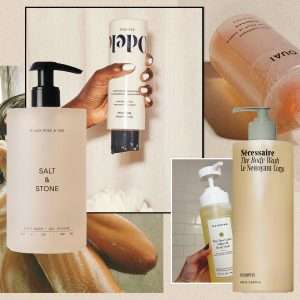Discover effective methods to safely remove window paint from your car’s body․ It’s crucial to act quickly․ Dried paint can be much harder to remove․ This guide provides step-by-step instructions and helpful tips․
Essential Supplies You’ll Need
Gather these items before you begin․ Having everything ready will streamline the process․
- Microfiber cloths: Soft cloths are essential to avoid scratching the paint․
- Warm, soapy water: A gentle cleaning solution․
- Plastic scraper: For carefully lifting paint․
- Rubbing alcohol (isopropyl alcohol): A solvent for stubborn spots․
- Car wax: To protect the paint after cleaning․
Remember to test any cleaning solution in an inconspicuous area first․ This will ensure it doesn’t damage your car’s paint․
Step-by-Step Removal Process
Follow these steps for the best results․ Patience is key!
Step 1: Initial Cleaning
Wash the affected area with warm, soapy water․ This removes loose dirt and debris․ Rinse thoroughly and dry with a microfiber cloth․
Step 2: Gentle Scraping
Use a plastic scraper to gently lift the paint․ Work at a shallow angle․ Avoid applying too much pressure․
Step 3: Applying Rubbing Alcohol
Dampen a microfiber cloth with rubbing alcohol․ Gently rub the remaining paint․ Avoid prolonged contact with the car’s paint․
Step 4: Final Cleaning and Waxing
Wash the area again with soapy water․ Dry it completely․ Apply a coat of car wax to protect the paint․
Important Precautions
Take these precautions to protect your car and yourself․
- Work in a well-ventilated area․
- Wear gloves to protect your hands․
- Avoid using harsh chemicals or abrasive cleaners․
- Test any cleaning solution in an inconspicuous area first․
Always prioritize safety when working with chemicals․
FAQ: Frequently Asked Questions
Q: Will rubbing alcohol damage my car’s paint?
A: Rubbing alcohol can potentially damage the clear coat if used excessively or left on for too long․ It’s crucial to use it sparingly and wipe it off immediately after application․ Always test in an inconspicuous area first․
Q: What if the paint is very old and hardened?
A: For hardened paint, you might need a specialized paint remover designed for automotive use․ Follow the product instructions carefully․ Consider consulting a professional detailer if you’re unsure․
Q: Can I use a heat gun to soften the paint?
A: While heat can soften paint, it’s risky to use a heat gun on your car’s body․ Excessive heat can damage the paint and potentially warp the metal․ It’s generally not recommended․
When to Seek Professional Help
Sometimes, DIY methods aren’t enough․ Consider professional help in these situations․
- If the paint is very old and hardened․
- If you’re concerned about damaging your car’s paint․
- If you’ve tried multiple methods without success․
Don’t hesitate to seek professional assistance if needed․ It’s better to be safe than sorry․
Alternative Removal Methods
Explore these alternative methods if the standard approach isn’t working․ Remember to proceed with caution․
Clay Bar Treatment
A clay bar can be effective for removing embedded contaminants, including paint overspray․ Lubricate the area well with clay bar lubricant․ Gently rub the clay bar over the affected area in straight lines․ Knead the clay bar frequently to expose a clean surface․
Specialized Paint Removers
Automotive-specific paint removers are available․ These are formulated to be safer for car paint than general-purpose removers․ Always read and follow the product instructions carefully․ Test in an inconspicuous area first․
Consider the environmental impact of the products you use․ Choose eco-friendly options whenever possible․
Post-Removal Care
Proper care after paint removal is essential to protect your car’s finish․ Don’t skip these steps!
Polishing
Polishing helps to restore the shine and remove any minor imperfections left by the paint removal process․ Use a polishing compound and a polishing pad on a dual-action polisher․ Work in small sections and follow the product instructions․
Waxing or Sealing
Apply a coat of wax or sealant to protect the paint from the elements․ This will help to prevent future damage and keep your car looking its best․ Choose a high-quality wax or sealant that is appropriate for your car’s paint type․
Preventing Future Paint Incidents
Take steps to prevent future paint mishaps․ Prevention is always better than cure․
- Park your car away from construction sites or areas where painting is taking place․
- Cover your car if you know painting will be happening nearby․
- Address any paint chips or scratches promptly to prevent further damage․
Being proactive can save you time and money in the long run․
Understanding Different Types of Window Paint
The type of window paint can influence the removal method․ Knowing what you’re dealing with is helpful․
Water-Based Paint
Water-based paints are generally easier to remove․ Warm, soapy water and gentle scrubbing are often sufficient․
Oil-Based Paint
Oil-based paints are more difficult to remove․ They require stronger solvents, such as mineral spirits or turpentine․ Use these solvents with caution and always test in an inconspicuous area first․
Spray Paint
Spray paint can be particularly challenging to remove, especially if it has dried for a long time․ Specialized paint removers may be necessary․
Long-Term Paint Care Considerations
Think about the long-term health of your car’s paint․ Proper maintenance is key․
- Wash your car regularly to remove dirt and grime․
- Avoid parking in direct sunlight for extended periods․
- Consider applying a ceramic coating for long-lasting protection․
A little effort goes a long way in preserving your car’s appearance․




